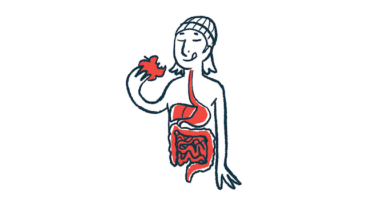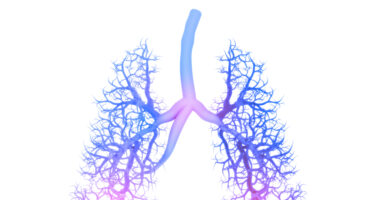Heart problems may be earlier and more common in SSc than thought
Study finds subclinical issues in 25% of patients using 'more sensitive' tool

Problems with the heart’s left ventricle at a subclinical — not yet symptomatic and overt — level were evident in 1 in every 4 people with systemic sclerosis (SSc) taking part in an Australian study when a potentially more sensitive measure than left ventricle ejection fraction was used.
Both symptomatic or asymptomatic left ventricle dysfunction also associated with poorer physical function and survival, data showed.
These findings suggest “an under-appreciated burden of subtle LV [left ventricle] systolic dysfunction in SSc that has a significant impact on patient symptomatology,” the researchers wrote.
The study, “Prognostic and functional importance of both overt and subclinical left ventricular systolic dysfunction in systemic sclerosis,” was published in the journal Seminars in Arthritis and Rheumatism.
Left ventricle ejection fraction measures were normal in most study patients
SSc, also known as scleroderma, is marked by the abnormal buildup of scar tissue (fibrosis) in the skin and, potentially, other organs like the lungs, kidneys, heart, and those of the digestive system.
Heart involvement can be life-threatening in SSc, and advanced imaging techniques have shown scar tissue formation in heart muscle in up to 90% of patients without symptoms, the researchers noted. Asymptomatic myocarditis, or inflammation of the heart muscle, may also occur.
Despite these abnormalities, little is known about scleroderma-related dysfunction of the left ventricle, the side of the heart that pumps oxygenated blood throughout the body.
To address this gap, scientists across Australia collaborated to investigate the frequency of reduced left ventricle function in SSc.
A total of 1,141 patients were recruited from the Australian Scleroderma Cohort Study, a multicenter and observational disease study. All had at least one measure taken of left ventricle ejection fraction (LVEF), the percentage of blood pumped from the left ventricle with each heartbeat. Patients with a history of secondary or non-SSc causes of left ventricle dysfunction were excluded.
Nearly all participants (97.6 %) had a consistently normal LVEF of at least 50%, while 27 (2.4 %) had an LVEF of less than 50% at least once. Seven of them (0.6 %) had an LVEF of less than 40%.
Those with an LVEF of less than 50% were more likely to be male, to have diffuse cutaneous SSc, a larger left atria (the top left heart chamber), higher peak blood pressure in the right ventricle, and more frequent right ventricular dysfunction.
These 27 patients also were more likely to have higher levels of inflammatory markers and to more often use medicines for heart-related issues and immunosuppression. Diseases that affected skeletal muscle, those attached to bones, also were more frequent in patients with an LVEF of less than 50%.
Nearly 21% of 211 patients showed left ventricle issues using the LV-GLS
Patients with a reduced LVEF also had the most impaired left ventricular global longitudinal strain (LV-GLS), a potentially more sensitive measure of heart muscle dysfunction.
“LV-GLS is a promising emerging tool to help identify early LV systolic dysfunction,” the researchers wrote, or that occurring at a “subclinical” level rather than the “more advanced disease stages” which LVEF is considered to capture.
LV-GLS was impaired in 44 of 211 evaluable participants (20.9 %) with a normal LVEF, “suggestive of subclinical LV systolic dysfunction,” the researchers wrote. Another five of seven with a low LVEF also had impaired LV-GLS.
Adjusting for age and sex, those with an LVEF below 50% were found to be 3.5 times more likely to have severe shortness of breath and to walk a shorter distance in six minutes by 88.2 meters (almost 290 feet). These patients had worse scores on the Health Assessment Questionnaire Disability Index, an overall measure of SSc-related disability, and the FACIT-Fatigue test. Impaired LV-GLS also associated with an increased risk of severe shortness of breath.
During follow-up, more patients with reduced LVEF died compared to those with normal LVEF (33.3% vs. 6.8%). Similarly, more patients with impaired LV-GLS died across follow-up than those with a normal LV-GLS (10.4% vs. 3.6%).
Further study urged into ‘more sensitive measures of LV function’
After adjustments, an LVEF of less than 50% was associated with significantly poorer survival, being male, and having diffuse SSc. Impaired LV-GLS also associated with poorer survival, which was slightly attenuated after adjusting for age.
“LV systolic dysfunction indicated by reduced LVEF was infrequent in a large cohort of individuals with SSc,” the scientists concluded. “However, by applying a more sensitive measure of ventricular function, LV-GLS, we identified systolic dysfunction in one-quarter of our SSc cohort.”
These results, they added, “indicate that LVEF alone is likely to be inadequately sensitive to detect important abnormalities of systolic function in SSc and future studies should evaluate more sensitive measures of LV function to evaluate clinical important changes in cardiac function in patients with SSc.”
A study limitation noted by the researchers was the availability of LV-GLS data “from a single study site as these measures at not routinely collected” in the Australian Scleroderma Cohort Study.







